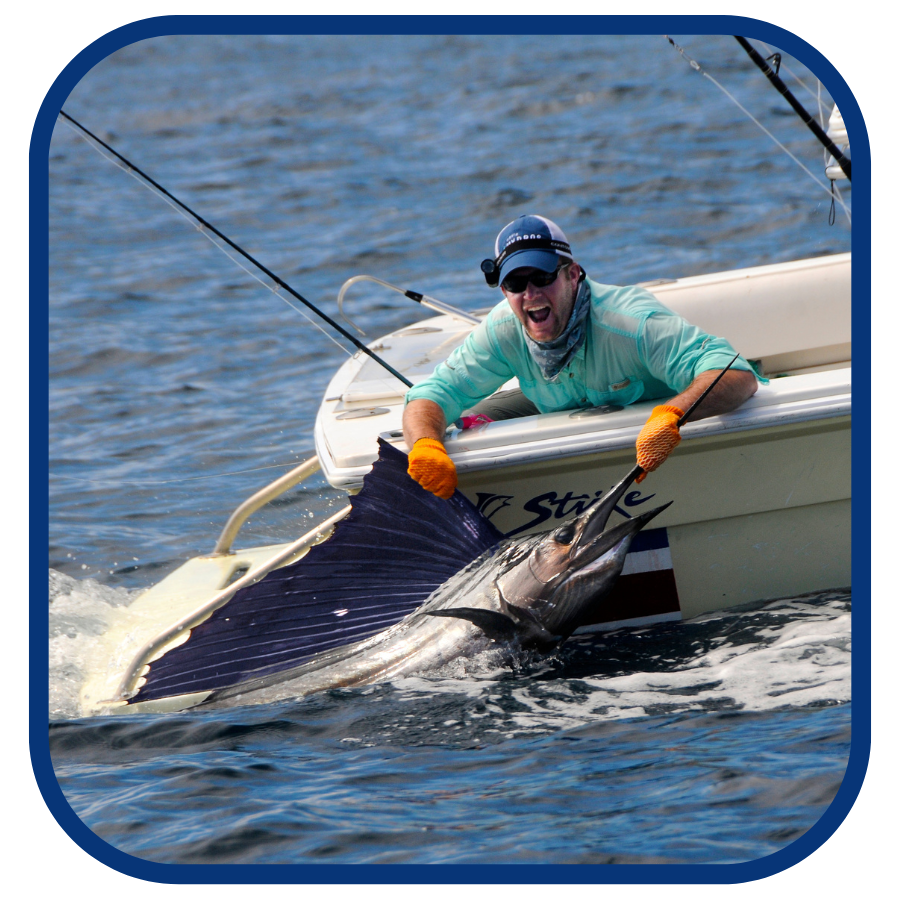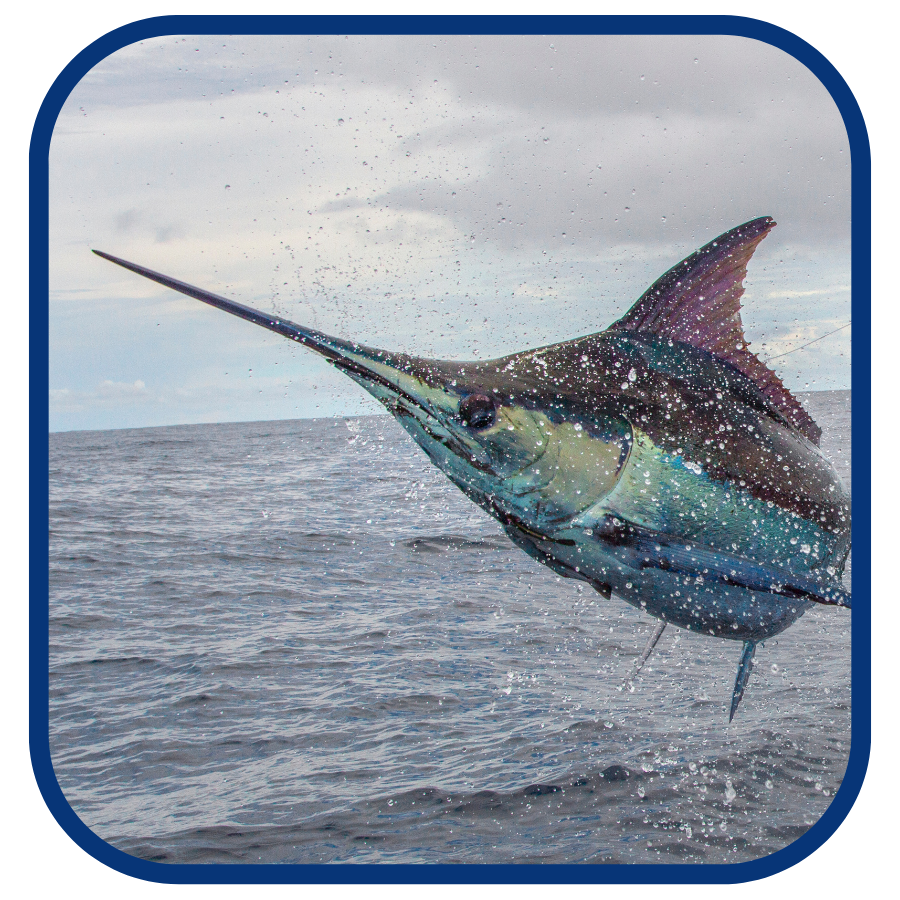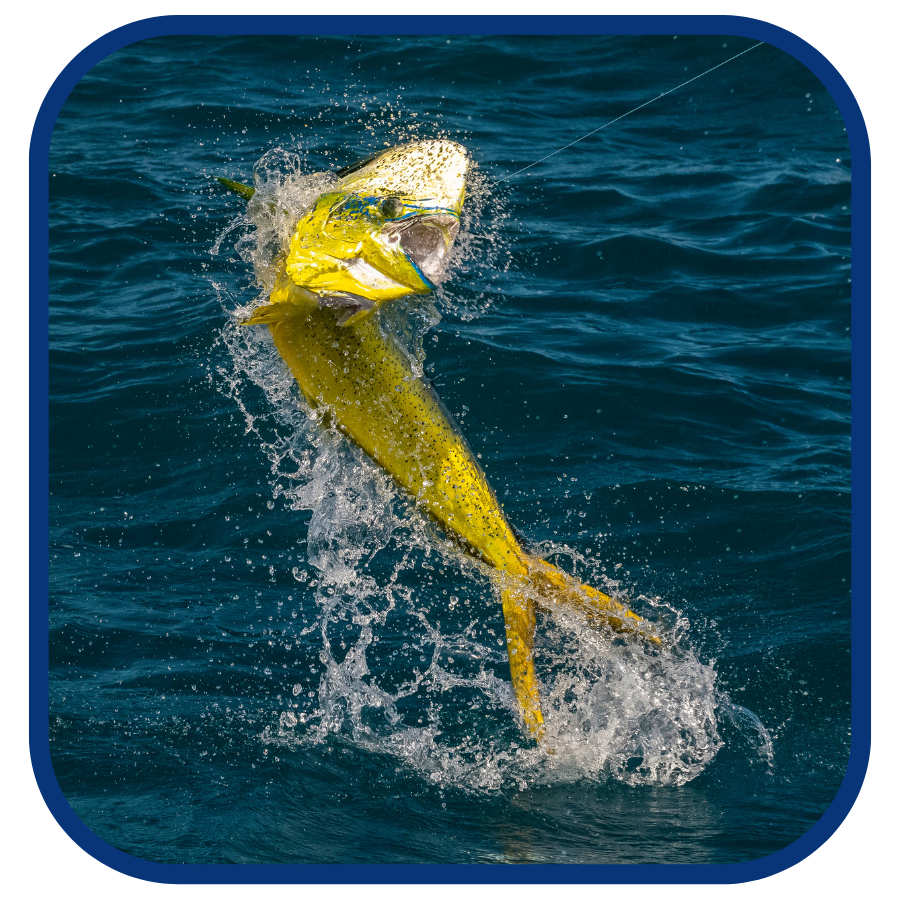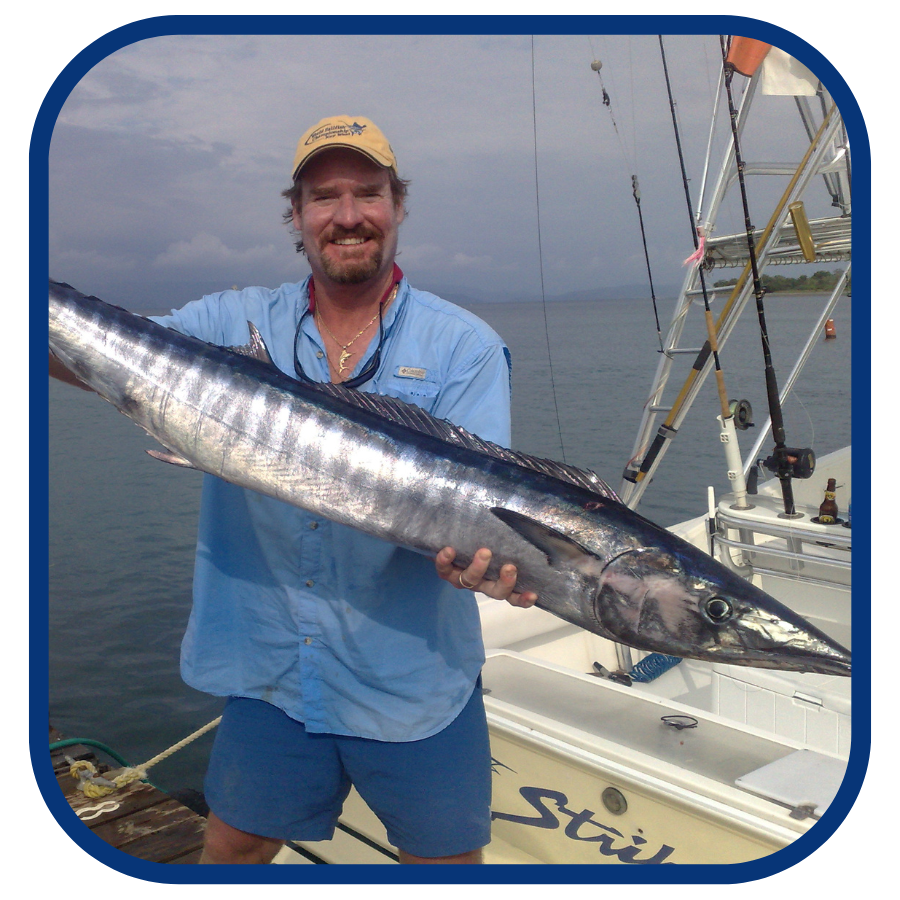OFFSHORE FISHING
"Tight lines and big catches: Costa Rican offshore fishing at its finest"
The waters off the Osa Peninsula are best known for their abundance of game fish such as sailfish, marlin, tuna, and dorado. These species can be caught year-round, but peak seasons vary depending on the species.
Offshore fishing is a popular activity for both experienced and novice anglers. These waters are known for their diverse marine lift and offer anglers the opportunity to catch a variety of game species with Sailfish and Marlin being the most sought after. World-class bill fishing for these species start just outside the mouth of the Golfo Dulce, about a forty-five minute boat ride from Crocodile Bay’s iconic 800-foot pier. Fishing is “catch and release” using safe circle hooks. The fishing director and English-speaking captains will work with you to accommodate any fishing technique. The offshore species may be caught year-round. Below you’ll find suggested months to get in on some real action!
SAILFISH
"Thrill of a lifetime: Sailfish angling in Costa Rica"

Costa Rica has often been referred to as the “Sailfish Capital of the World,” and this area is known for the numbers and size of sailfish. The Pacific sailfish grow much larger than their cousins in the Atlantic, and they are famed for their incredible speed and high jumps. With weights averaging from 80 to 100 pounds, sailfish usually travel alone or in small groups. It’s fighting ability and spectacular aerial aerobatics attract every saltwater angler. However, due to the smaller gill size (as compared to that of the marlin), sailfish get exhausted quickly and are considered a lighter-tackle species. Many anglers are now catching the sailfish with fly fishing gear. Anglers will find the sailfish available year- round with the greatest numbers taken November through May and peak again during a short “Indian Summer” in late June or early July.
MARLIN
"live a legend: Marlin fishing in the waters of Costa Rica"

The “Lady in the Blue Dress” or the blue marlin is the most common of the marlin family and cruise our waters all year. They are a prime target for anglers at Crocodile Bay. While the majority of marlin caught (and released) at the resort are blues, some black marlin do get into the mix. Striped marlin have also been hooked at Crocodile Bay, but in limited numbers as compared to their larger and more numerous cousins. . These fish are always catch and release. Marlin have been taken every month of the year. Large numbers of Blues are taken in November and December with another peak in March and April. Black marlin may be found in July and August with the record largest one taken in August.
DORADO
"Dorado fishing in Costa Rica: where the big one is always within reach"

Also known as dolphinfish or mahi-mahi, dorado average 20 pounds or more and are one of the many favorite highlights of Costa Rica sport fishing. These fish are common to the waters off the cost of the Osa Peninsula. They are known for their vibrant, iridescent colors which can range from bright greens and blues to yellows and oranges. They have a distinctive, elongated dorsal fin and can grow to be quite large, with some individuals reaching lengths of up to 6 feet. Dorado are one of the fastest growing fish in the ocean and can live up to five-years. While dorado can be caught throughout the year, we find dorado are more abundant from January through May. And, the best time to target dorado weight over 50 pounds is in November, December and January. At times, these fish will venture slightly inshore and are taken inside the Golfo Dulce or near shore. They are a great addition to the dinner table.
YELLOWFIN TUNA
"Tuna fishing in Costa Rica: where the ocean's giants come to play"

Yellowfin and Big Eye Tuna can pass through any day of the year especially if the spinner or spotted dolphins are present. Yellowfin, the most common species, can be taken year round, but the best months are usually during the most productive runs of dorado in November and December and then again in June and July. Most are football size, but larger tuna weighing up to 300 pounds can surprise an angler at any time. They can be found under floating debris fields/logs washed offshore during the rainy season. Yellowfin Tuna have a symbiotic relationship with spinner and spotted dolphins. Often when you find the dolphins, the tuna are below. It is quite a show that beats any Marine Park in the world as you watch them while waiting for the big yellowfin to bite. Makes a great dinner cooked to your liking!
WHAOO
"Tuna fishing in Costa Rica: where the ocean's giants come to play"

Wahoo are very recognizable and rich in color, with their bodies covered with shimmering blue vertical stripes. We catch them at Crocodile Bay by fast trolling. The upper mouth is movable, and the jaws close like a pair of scissor; sharp teeth cutting with ease. Wahoo are reputed to be one of the fastest fish in the ocean, reaching speeds of 50 miles per hour. These fast and explosive fish are found year round in limited numbers. While not prevalent, our wahoo average between 30 to 40 pounds. They are taken offshore and at times during summer months venture inshore and hang out around the rock outcroppings.
Crocodile Bay’s fishing charters are well equipped with all the necessary equipment for a successful fishing trip, including outriggers, fighting chairs, and top-notch boats. One of the thrills of fishing the waters off the coast of the Osa Peninsula is that you never know what you will pull up on the end of the line.

